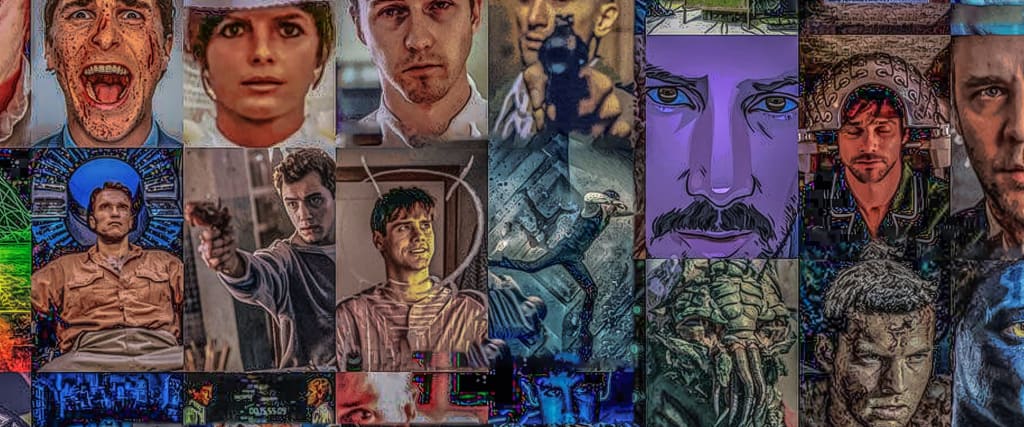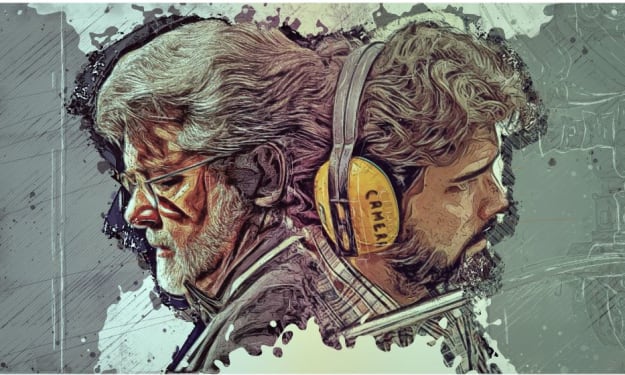
What is Postmodern cinema? A postmodern film's architecture is characterized by the subversion of the ordinary conventions of narrative structure, rather shaping narrative and meaning by breaking the frame and interrupting the spectator’s suspension of disbelief. Apocalypse Now, Pulp Fiction and Blade Runner use pastiche to knowingly reference moments and icons from other films, genres and media. In this paper I will examine different aspects of postmodern cinema, analyzing narrative structure, storytelling from multiple viewpoints, and the active shaping of meaning and how that affects the spectator’s sense of displacement. As a primary example, I will refer to Francis Ford Coppola's Apocalypse Now, a film that utilizes a considerable number of these postmodern tactics.
The new art form of the 20th century was the cinema. "After Citizen Kane simultaneously interwove two different storylines – each taking place in different temporal and spatial locations, post-structuralist filmmakers have questioned and altered conventional storytelling structures, forms, character archetypes and narratives in their experimentation with the capabilities of the filmic form" (Parker). While there is some truth to this, it presents a distinct difficulty in understanding postmodern cinema and what it is. One would have to look at this cinema from another angle and with an eye tuned to post-structuralist narrative. "If you look at architecture it might seem like postmodern buildings have been put together by different classical ways of architecture. One might also find these traits in postmodern films" (Nygaard). We can look at different characteristics of postmodern film and see the meaningful symbols interconnecting texts with “incredulity towards meta-narratives” (Lyotard) in the pursuit of reconstructing lifestyles and challenging the structures of the past. The ideas, themes and methods of postmodernism are applied through the prism of film.
The postmodernist film attempts to challenge mainstream conventions of cinema such as narrative structure. For instance, Christopher Nolan's 2000 neo-noir-psychological thriller, Memento, is told in two different sequences of scenes interspersed during the film: a series in black-and-white that tells the story chronologically, and a series of color sequences shown in the opposite order. The two sequences coalesce at the conclusion of the film. In Quentin Tarantino's 1994 American black comedy crime film, Pulp Fiction, the narrative is presented out of sequence, structured around three distinct but interrelated story lines, stepping outside of mainstream conventions and more into a post-structuralist narrative style. Apocalypse Now utilizes a seemingly traditional narrative structure, but it subtly subverts audience expectations with its absence of both Hollywood credits and a three-act structure. Instead it is broken up into pockets of events that shape and outline the surrealistic structural framework inhabited by the world in the movie. Apocalypse Now opens with the image of a beautiful Vietnam landscape, green in nature, a subtle helicopter sound, and then bursts open with fire and explosions to the sounds of The End by The Doors, playing in the inferno. Coppola decided it would be humorous to start the film with this song. Having been classmates with Jim Morrison in film school, he felt it was appropriate given that the soldiers of the day listened to psychedelic rock. This sets an unusual mood for the film and its surreal structure and characterizations.
A necessary component of to escapist cinema is the need for the spectator to ignore the reality of watching a two-dimensional motion picture and to temporarily become lost or engrossed in the film’s world. Postmodernist cinema has a self-circular relationship between cause and effect, a method that emphasizes the structure relative to the images in media and not to any kind of exterior realism in an act of self-reference. This breaks down the audience suspension of disbelief and highlights the meta-aspects of the post-modern cinematic experience, spelling out messaging encoded with intertextuality. Postmodern film uses pastiche of many genres and styles. For example, Blade Runner is a hybrid science fiction and completely encoded with film noir and other visual elements that enrich the postmodern ideals inscribed throughout the film. These elements together form a unique genre, popularized in the 1980s, called
CyberPunk high concept science fiction with postmodern themes and characters. Quentin Tarantino has made a career using this style, steeped in meta-in-jokes and littered with pastiche of many film genres, styles, and other media. In Pulp Fiction, The Ezekiel 25:17 speech Samuel L. Jackson recites is based on the opening graphics crawl of the Sonny Chiba action film Karate Kiba 1976. Later in the film, as Bruce Willis flees the pawnshop, he sees a sign that reads but as some of the letters are missing it reads Picking up Zed's keys, Willis looks at the 'Z' on the key ring, subliminally spelling out It is then that Willis goes back to save Marcellus Wallace.
Maynard's pawnshop is filled with all types of weapons referencing different films: the bat
(Walking Tall 1973), the chainsaw (The Texas Chainsaw Massacre 1974), the hammer (Friday The 13th Part 2 1981), the Samurai sword (Lightning Swords of Death 1972). His choice is the Samurai sword, the weapon of honour, and it is through this that his character regains his sense of nobility. Tarantino mixes in a wide range of intermeshing references to different films, some of which may go unrecognized by the average viewer. The dance scene with John Travolta and Uma Thurman is a pastiche of Gloria Morin and Mario Mezzabotta's dance in the 1963 film, 8½. Tarantino doesn't only stay within the realm of movies; he also references comic books. Uma Thurman's Fox Force Five character, Raven McCoy, is a reference to three characters from the Marvel Comic book X-Men. The name Raven is a nod to Raven Darkholme (Mystique's real name), McCoy is the last name of Beast (Hank McCoy) and Mia describes her character as being raised by circus performers, just like Kurt Wagner (Nightcrawler). Also, all three characters are blue. This pastiche of references opens up a dialogue with the informed spectator who can detect and spot the messages and allusions.
At its core, postmodern cinema theory questions previous theories of meta-narratives perhaps through dealing with and fracturing the beliefs of mainstream conventions in narrative structure and suspension of disbelief. The spectator is the one who can recognize these creative decisions as they appear in multiple interactive layers that shape a montage of events, scenes and characters that in turn, creates simulations that encourage the spectator to become lost or engrossed in the film’s world. Pulp Fiction, Blade Runner and Apocalypse Now have elements of self-reference and pastiche that are skilfully integrated to form a seamless blend of sharp stylized filmmaking. This amalgamation of substance from other genres and media can affect the settings, iconography and so much more. Clearly it has an effect on the suspension of disbelief as well as the narrative and characters. These theoretical concepts are organized and applied through multiple layers of viewing, but in that process, the spectator is in an ever-shifting, immersive, sensorial space and left to learn, sharpen, and enjoy these tactics. The tactics of navigation through these postmodern concepts and their complexities. The meaning of the images or concepts may be lost on some but to those who seek messages they will find them within the screen’s images.






Comments
There are no comments for this story
Be the first to respond and start the conversation.